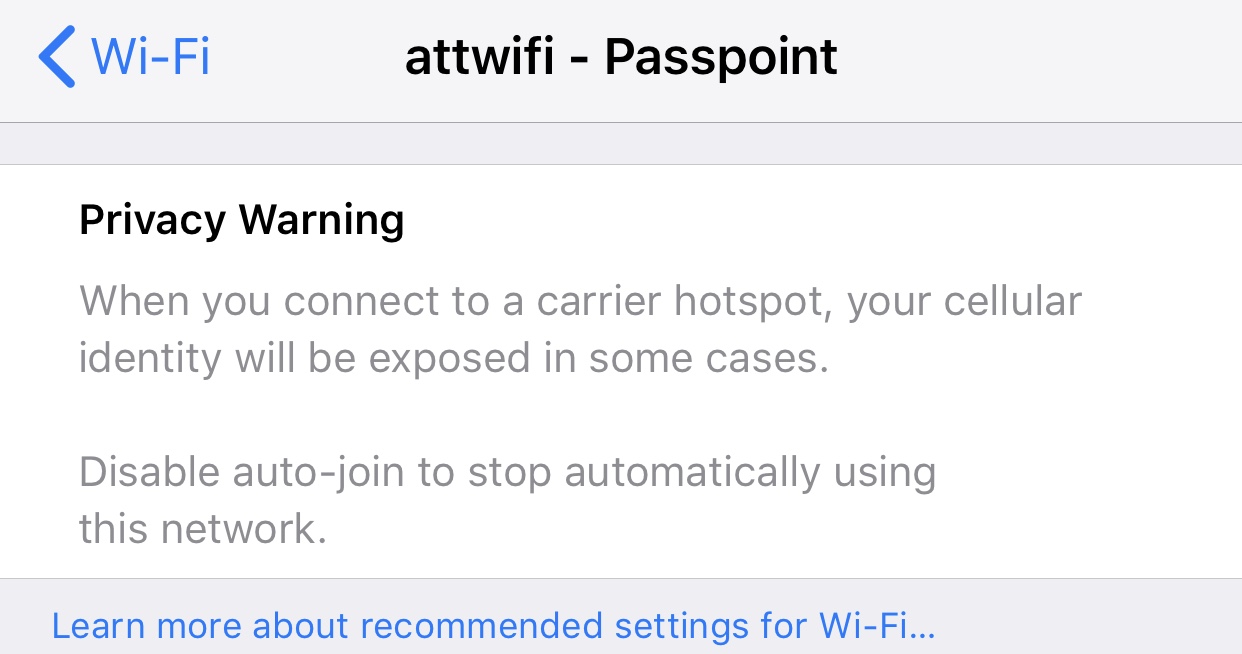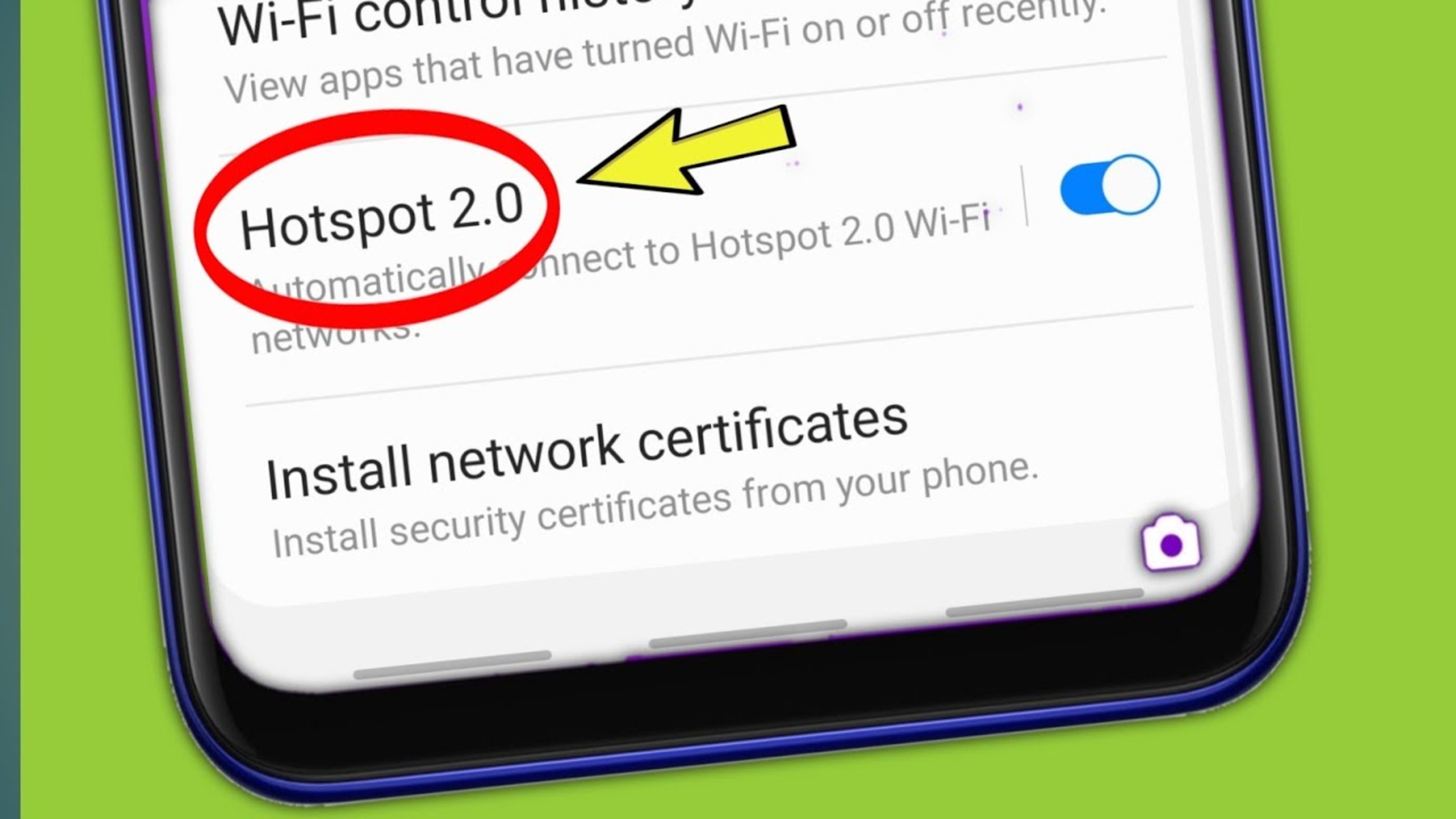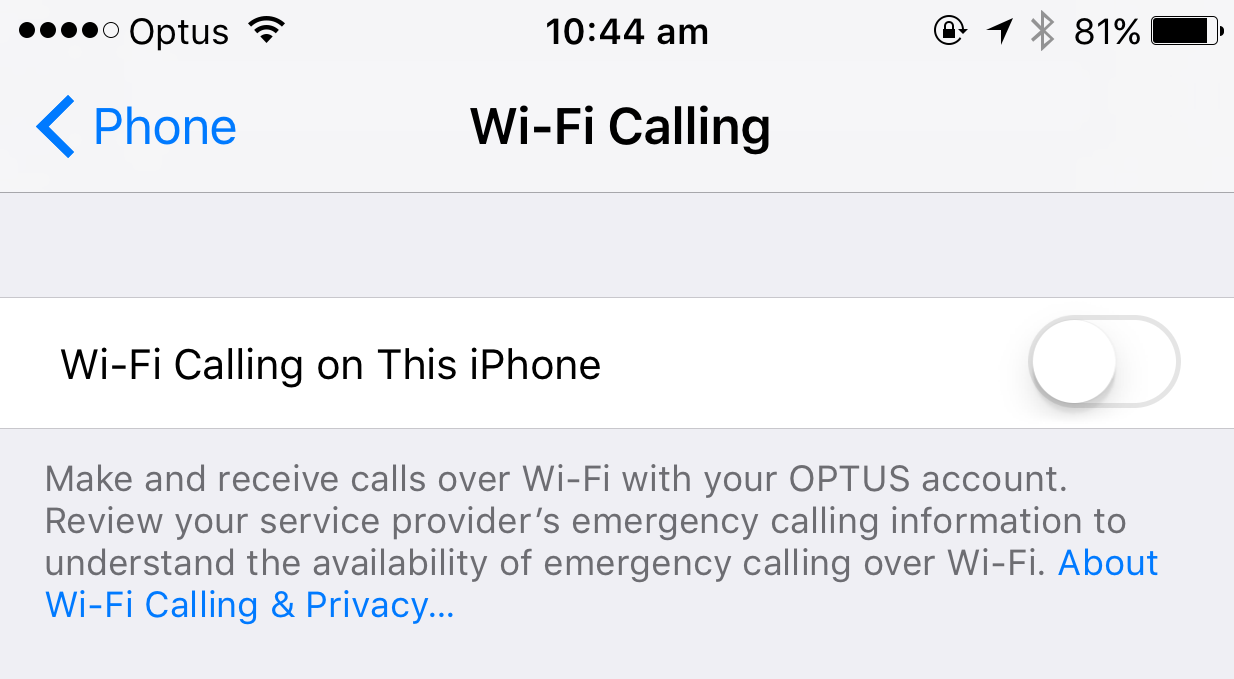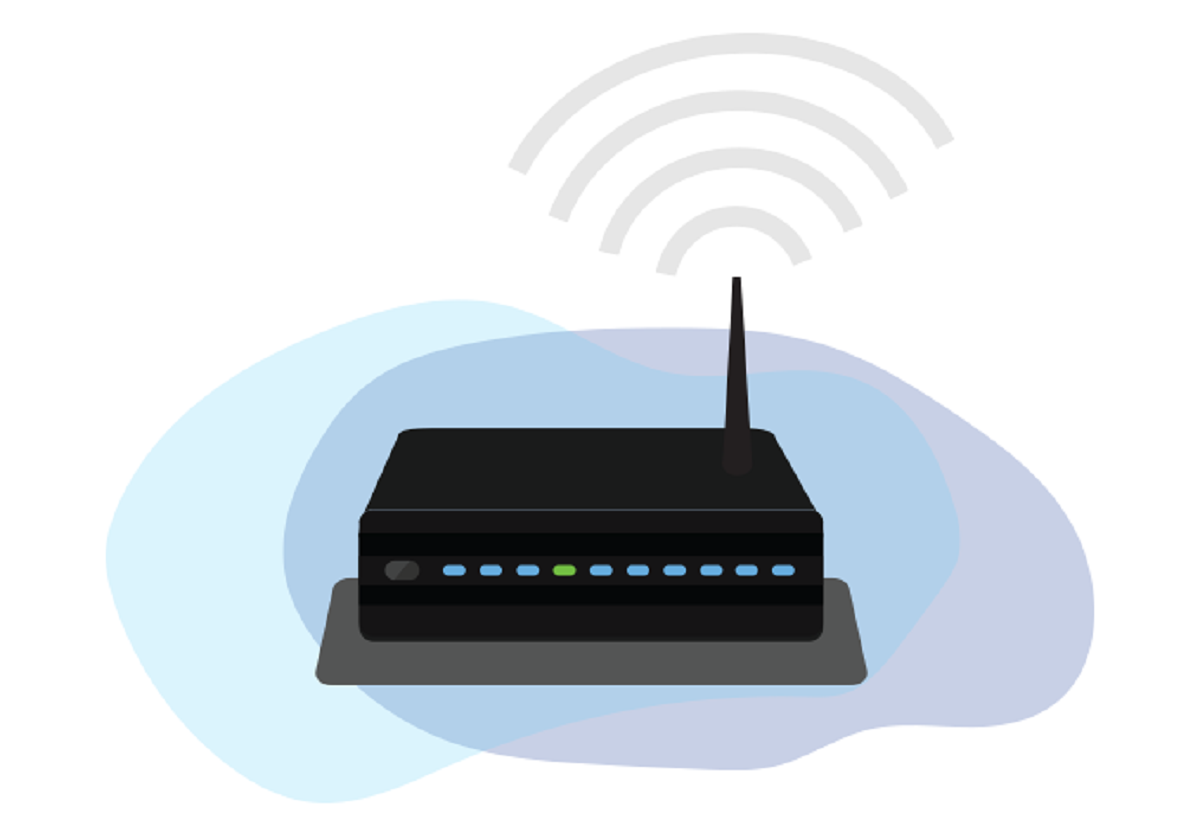Introduction
Welcome to the world of Passpoint WiFi! In today’s modern era, staying connected online has become an essential part of our daily lives. Whether it’s for work, leisure, or staying connected with loved ones, having a reliable and fast internet connection is crucial. That’s where Passpoint WiFi comes into play.
Passpoint WiFi, also known as Hotspot 2.0, is an innovative technology that aims to simplify and enhance the user experience when connecting to WiFi networks. It offers a seamless and secure connection, allowing users to connect to different networks automatically without the hassle of entering login credentials repeatedly.
Gone are the days of manually searching for WiFi networks, keying in login details, and dealing with inconsistent connection speeds. Passpoint WiFi revolutionizes the way we connect by facilitating a seamless handoff between WiFi networks. It provides a streamlined and secure connection, delivering a better user experience.
With the rapid growth of mobile devices and the demand for reliable WiFi connectivity, Passpoint WiFi has gained popularity and emerged as a game-changer in the world of wireless networking. Whether you’re at an airport, a hotel, a coffee shop, or any other public space, Passpoint-enabled WiFi networks allow you to connect effortlessly and enjoy a smooth browsing experience.
In this article, we will explore the intricacies of Passpoint WiFi. We will delve into its working mechanism, the benefits it offers, its implementation process, and how it differs from regular WiFi networks. Moreover, we will touch upon the limitations and discuss the global adoption of Passpoint WiFi.
So let’s dive into the fascinating world of Passpoint WiFi and discover how this technology is reshaping the way we connect to the internet. Get ready to experience effortless connectivity and bid farewell to the days of manual network selection and login hassles!
What is Passpoint WiFi?
Passpoint WiFi, also referred to as Hotspot 2.0, is a Wi-Fi certification program introduced by the Wi-Fi Alliance. It aims to simplify and enhance the process of connecting to WiFi networks by providing a seamless and secure user experience. Passpoint WiFi allows for automatic and seamless roaming between networks without the need to manually select or re-enter login credentials.
Traditional WiFi networks require users to manually search for and select available networks, followed by entering login credentials such as usernames and passwords. This process can be time-consuming and frustrating, particularly in high-traffic areas with multiple WiFi networks. Passpoint WiFi eliminates these inconveniences by automating the connection process.
Passpoint WiFi achieves this seamless connection through the use of industry-standard protocols and security measures. It utilizes the Extensible Authentication Protocol (EAP) and Transport Layer Security (TLS) to establish a secure connection between the user’s device and the WiFi network. This ensures that sensitive information, such as login credentials and personal data, is encrypted and protected from unauthorized access.
To take advantage of Passpoint WiFi, both the WiFi network and the user’s device must support the Passpoint technology. WiFi network providers need to deploy specialized equipment that is Passpoint-certified, while device manufacturers need to integrate Passpoint capabilities into their products. Once both the network and the device are Passpoint-enabled, the seamless connection process can take place.
Passpoint WiFi offers significant benefits to both users and network providers. For users, it provides a hassle-free and secure connection experience. By eliminating the manual selection and login process for each network, Passpoint WiFi ensures a seamless transition between different WiFi hotspots, saving time and effort.
Network providers also benefit from Passpoint WiFi by improving the overall user experience. With Passpoint technology, providers can offer enhanced connectivity features such as automatic network discovery, secure authentication, and seamless roaming, all of which contribute to increased customer satisfaction and loyalty.
In summary, Passpoint WiFi is a Wi-Fi certification program that revolutionizes the way we connect to WiFi networks. By automating the connection process and offering secure authentication, Passpoint WiFi provides a seamless and hassle-free experience for users. In the next section, we will discover how Passpoint WiFi works and explore its underlying technologies in more detail.
How does Passpoint WiFi work?
Passpoint WiFi operates on a set of industry-standard protocols and technologies to facilitate automatic and seamless connections between WiFi networks. Let’s take a closer look at the key components and working principles that make Passpoint WiFi possible:
- Passpoint Certification: WiFi network providers must obtain Passpoint certification from the Wi-Fi Alliance to ensure interoperability and compliance with the Passpoint standard. This certification verifies that the network equipment and services adhere to the required protocols and security measures.
- Hotspot 2.0: Passpoint WiFi is often referred to as Hotspot 2.0, as it is based on the Hotspot 2.0 technology. This technology allows devices to automatically discover and connect to Passpoint-enabled networks by leveraging the domain-based service provider discovery mechanism.
- Access Point Discovery: When a Passpoint-enabled device enters the proximity of a Passpoint-enabled network, it automatically scans for available networks using the Domain Name System (DNS). The device requests the list of available networks from the network’s domain server, which responds with information about Passpoint networks in the vicinity.
- ANQP (Access Network Query Protocol): ANQP is a protocol that retrieves metadata and network information from the domain server. The Passpoint-enabled device uses ANQP to obtain details about various network parameters, including network name, supported authentication methods, security capabilities, and available services.
- Authentication and Encryption: Once the user selects a Passpoint network, the device initiates the authentication process. It uses the Extensible Authentication Protocol (EAP), which provides a framework for secure authentication. The device and the network authenticate each other, ensuring that both parties are legitimate and authorized to establish a connection. The authentication process may involve username and password verification or other methods, depending on the network’s security configuration.
- Secure Connection Establishment: Passpoint WiFi relies on Transport Layer Security (TLS) to establish a secure connection between the device and the Passpoint network. TLS encrypts the data exchanged between the device and the network, safeguarding it from potential eavesdropping or unauthorized access. This ensures that sensitive information, such as login credentials, remains protected throughout the connection.
- Seamless Handoff: Passpoint WiFi enables seamless handoff between different Passpoint networks. If a user moves from one Passpoint network to another within the same domain, the device automatically disconnects from the current network and connects to the new network without requiring the user to manually re-enter login credentials. This seamless handoff ensures uninterrupted connectivity as users move between different Passpoint-enabled locations.
By combining these technologies and mechanisms, Passpoint WiFi simplifies the connection process and enhances the overall user experience. It eliminates the need for manual network selection and entry of login credentials, allowing users to seamlessly connect to Passpoint-enabled networks wherever they go.
In the next section, we will explore the benefits that Passpoint WiFi offers to users and network providers alike.
Benefits of Passpoint WiFi
Passpoint WiFi, with its seamless and secure connectivity, offers a range of benefits to both users and network providers. Let’s explore some of the key advantages that Passpoint WiFi brings to the table:
- Seamless Connection Experience: Passpoint WiFi eliminates the cumbersome process of manually selecting and entering login credentials for different WiFi networks. Once a Passpoint-enabled device is registered with a Passpoint network, it automatically connects to that network whenever it is in range. This seamless connection experience allows users to effortlessly enjoy WiFi connectivity without any disruptions or the need for manual interventions.
- Improved Network Performance: Passpoint WiFi improves network performance by optimizing connection handoffs. As users move between different Passpoint networks within the same domain, the handoff process is seamless and automatic. This enables uninterrupted connectivity and reduces the chances of network downtime or disruptions. Users can experience high-quality and reliable connections, even in areas with dense WiFi networks.
- Enhanced Security: Passpoint WiFi employs robust security measures to protect user data and prevent unauthorized access. The use of Extensible Authentication Protocol (EAP) and Transport Layer Security (TLS) ensures that connections between Passpoint-enabled devices and networks are encrypted and secure. This encryption safeguards personal information and prevents unauthorized interception, providing users with a higher level of data protection and privacy.
- Reduced User Effort: With Passpoint WiFi, users no longer need to manually search for and connect to WiFi networks or repeatedly enter login credentials. The automated connection process saves time and effort, especially in environments with multiple WiFi networks, such as airports or shopping malls. Users can seamlessly connect to Passpoint-enabled networks with a single registration, making the WiFi connection experience effortless and hassle-free.
- Increased Customer Satisfaction: Passpoint WiFi enhances the user experience, leading to higher levels of customer satisfaction. By simplifying the connection process and providing seamless handoffs, users can enjoy uninterrupted connectivity and effortless transitions between Passpoint networks. This positive experience fosters customer loyalty, encouraging users to choose Passpoint-enabled networks over traditional WiFi options.
- Advanced Service Discovery: Passpoint WiFi enables advanced service discovery, allowing Passpoint-enabled devices to access relevant information about the available network services. This includes detailed information about services such as streaming video, voice-over-IP (VoIP) calling, and more. Users can easily identify networks that offer specific services, enhancing their overall WiFi experience.
Overall, Passpoint WiFi offers a multitude of benefits to both users and network providers. It simplifies the connection process, enhances network performance, ensures data security, reduces user effort, and improves customer satisfaction. As Passpoint WiFi continues to be adopted globally, these advantages contribute to a better WiFi experience for everyone involved.
Implementation of Passpoint WiFi
The implementation of Passpoint WiFi involves coordination between network providers and device manufacturers to ensure compatibility and seamless connectivity. Let’s explore the key steps and considerations in the implementation process:
- Passpoint Certification: Network providers need to obtain Passpoint certification from the Wi-Fi Alliance to ensure compliance with the Passpoint standard. This certification verifies that the network equipment and services meet the necessary requirements and adhere to industry-standard protocols and security measures.
- Passpoint-Enabled Network Infrastructure: Network providers must deploy Passpoint-enabled network infrastructure. This includes upgrading existing access points or installing new ones that support the Passpoint technology. These access points are equipped with the necessary software and protocols to facilitate automatic network discovery, secure authentication, and seamless handoff.
- Integration with Back-End Systems: Network providers need to integrate Passpoint technology with their back-end systems. This includes configuring the network’s authentication and security mechanisms to align with the Passpoint standard. The integration process involves ensuring compatibility with industry-standard protocols, such as Extensible Authentication Protocol (EAP) and Transport Layer Security (TLS).
- Device Support and Integration: Device manufacturers need to integrate Passpoint capabilities into their devices. This involves incorporating Passpoint-compatible software, drivers, and firmware that support automatic network discovery, secure authentication, and seamless handoff. Device manufacturers must ensure that Passpoint-enabled devices can seamlessly connect to Passpoint networks without any manual intervention.
- User Registration and Credential Provisioning: Network providers usually require users to register their devices and provision credentials to establish a secure connection. This registration process may involve capturing device-specific information and associating it with the user’s account. Users may need to enter their credentials, such as usernames and passwords, during the initial registration process.
- Network Roaming Agreements: Network providers may establish roaming agreements with other Passpoint-enabled networks or service providers. These agreements allow users to seamlessly connect to affiliated networks in different geographic areas without the need for separate registrations or additional authentication. Roaming agreements enable users to roam between networks while maintaining the same level of convenience and security.
- Communication with End Users: Network providers must educate their end users about the benefits and convenience of Passpoint WiFi. They should provide clear instructions on how to connect to Passpoint networks and any specific configurations or settings that may be required. Effective communication ensures that users are aware of and can take advantage of Passpoint WiFi capabilities.
Successful implementation of Passpoint WiFi requires collaboration between network providers and device manufacturers. By enabling Passpoint technology in their networks and devices, they can deliver a seamless, secure, and user-friendly WiFi experience.
In the next section, we will examine the global adoption of Passpoint WiFi and its significance in enhancing connectivity on a worldwide scale.
Global Adoption of Passpoint WiFi
Passpoint WiFi has garnered significant attention and adoption worldwide, spearheading a new era of seamless wireless connectivity. Let’s explore the global landscape of Passpoint WiFi adoption and its impact on enhancing connectivity:
Passpoint WiFi has witnessed widespread adoption across various sectors and industries. Airports, hotels, coffee shops, shopping malls, and other public spaces have embraced Passpoint technology to enhance the WiFi experience for their users. This adoption is driven by the desire to provide reliable, hassle-free connectivity while maintaining robust security measures.
One of the key drivers behind the global adoption of Passpoint WiFi is the growing demand for seamless connectivity. As technology evolves, users expect ubiquitous and uninterrupted internet access. Passpoint WiFi enables users to seamlessly connect to networks without the need for manual intervention, enhancing the overall browsing experience.
Furthermore, Passpoint WiFi opens up opportunities for network providers to offer value-added services. With the ability to easily discover services available on Passpoint networks, users can access specific offerings such as video streaming, voice-over-IP (VoIP) calling, and tailored content. This additional functionality enhances the user experience and opens doors for new revenue streams for network providers.
Passpoint WiFi adoption is not limited to a specific region or country. The technology has gained traction globally, with network providers and device manufacturers working together to ensure compatibility and interoperability across different networks and devices. This global adoption paves the way for seamless connectivity for users who travel internationally or rely on WiFi networks outside their home country.
The Wi-Fi Alliance plays a pivotal role in driving the global adoption of Passpoint WiFi. By promoting Passpoint certification and ensuring compliance with industry standards, the Wi-Fi Alliance allows network providers and device manufacturers to achieve interoperability and compatibility. This collaboration encourages the widespread adoption of Passpoint WiFi and fosters a thriving ecosystem of Passpoint-enabled devices and networks.
Passpoint WiFi adoption is poised to continue growing as the technology evolves and becomes more prevalent. With the increasing prevalence of smart cities, connected cars, and the Internet of Things (IoT), Passpoint WiFi offers a seamless and secure connectivity solution for a wide range of applications and use cases.
Overall, Passpoint WiFi is experiencing robust global adoption, enhancing connectivity across different industries and sectors. Users can expect an increasingly seamless and hassle-free WiFi experience, while network providers can leverage Passpoint technology to offer value-added services and cater to the evolving demands of their customers.
Passpoint WiFi vs Regular WiFi
Passpoint WiFi and regular WiFi networks differ in terms of their connectivity experience and underlying technologies. Let’s compare the key differences between Passpoint WiFi and regular WiFi:
- Authentication Process: In regular WiFi networks, users typically need to manually select the network and enter login credentials, such as usernames and passwords, to establish a connection. Passpoint WiFi simplifies the authentication process by automating the connection and eliminating the need for repetitive logins.
- Seamless Roaming: Traditional WiFi networks often require users to reconnect and re-enter credentials when switching between different networks or moving between coverage areas. Passpoint WiFi enables seamless roaming between Passpoint-enabled networks within the same domain, ensuring uninterrupted connectivity without the need for manual intervention.
- Service Discovery: Passpoint WiFi provides advanced service discovery capabilities, allowing Passpoint-enabled devices to access detailed information about available network services. This includes specific offerings like video streaming, VoIP calling, and other value-added services. Regular WiFi networks typically do not have built-in service discovery features.
- Security: Passpoint WiFi offers enhanced security measures compared to regular WiFi networks. It utilizes industry-standard protocols like EAP and TLS to establish a secure connection and encrypt data exchanges between devices and networks. This provides users with a higher level of protection against unauthorized access and data breaches.
- User Experience: Passpoint WiFi enhances the user experience by eliminating manual network selection and repetitive login processes. Users can seamlessly connect to Passpoint-enabled networks without the need to remember or enter credentials each time. Regular WiFi networks require users to manually search for and select the desired network, followed by entering login details.
- Industry Support: Passpoint WiFi is backed by the Wi-Fi Alliance, an industry association that promotes the adoption of Passpoint technology and ensures interoperability among devices and networks. Regular WiFi networks, although widely used, do not have the same level of industry support and standardized certification processes.
Passpoint WiFi and regular WiFi networks serve different connectivity needs and cater to different user preferences. Passpoint WiFi excels in providing a seamless and secure connectivity experience, particularly in high-traffic areas where multiple Passpoint-enabled networks are available. Regular WiFi networks, on the other hand, offer a more familiar and widely available option for connecting to WiFi networks that may not support the Passpoint technology.
Ultimately, the choice between Passpoint WiFi and regular WiFi depends on the user’s specific requirements and the availability of Passpoint-enabled networks. Passpoint WiFi offers a convenient and efficient connectivity solution for users who value seamless roaming, enhanced security, and advanced service discovery capabilities.
In the next section, we will explore the limitations and challenges associated with Passpoint WiFi to provide a comprehensive understanding of the technology.
Limitations of Passpoint WiFi
While Passpoint WiFi offers numerous benefits and improvements, there are certain limitations and challenges associated with its implementation and usage. Let’s explore some of the key limitations of Passpoint WiFi:
- Device Compatibility: Passpoint WiFi requires both the network infrastructure and the user’s device to be Passpoint-enabled. However, not all devices on the market support Passpoint technology. This can limit the availability and accessibility of Passpoint WiFi for users who have non-compatible devices.
- Network Availability: Passpoint-enabled networks are not as widespread as regular WiFi networks. While Passpoint WiFi has gained adoption in certain sectors, such as airports and hotels, its availability in other public spaces or residential areas may be limited. This can restrict users’ ability to fully utilize Passpoint WiFi benefits in all locations.
- Interoperability Challenges: Ensuring interoperability between Passpoint-enabled networks from different providers can be challenging. While the Passpoint certification program aims to promote compatibility, there may still be instances where networks do not seamlessly work together, resulting in connectivity issues for users trying to switch between different Passpoint networks.
- User Awareness and Education: Despite the growing adoption of Passpoint WiFi, many users may still be unfamiliar with the technology and its benefits. Lack of awareness or understanding of Passpoint WiFi may lead users to overlook its advantages or struggle to connect to Passpoint-enabled networks if they are not aware of the necessary configuration or authentication processes.
- Network Infrastructure Upgrades: Implementing Passpoint WiFi may require network providers to upgrade their existing infrastructure or invest in new equipment that supports Passpoint technology. These upgrades can be costly and time-consuming, particularly for smaller network operators or those with limited resources.
- Deployment Challenges: Deploying Passpoint-enabled networks in densely populated areas or complexes with multiple access points may pose logistical challenges. Managing the configuration and synchronization of multiple access points to ensure seamless handoff and authentication can be complex and may require careful planning and coordination.
- Security Risks: While Passpoint WiFi provides enhanced security measures, no system is entirely foolproof. Passpoint networks can still be vulnerable to security breaches, and users must remain vigilant about their personal information and utilize best practices for securing their devices and connections when using any WiFi network, including Passpoint-enabled networks.
Despite these limitations, Passpoint WiFi continues to evolve and improve, addressing many of these challenges. As device compatibility increases, more network providers deploy Passpoint-enabled networks, and user awareness grows, the limitations of Passpoint WiFi are likely to diminish gradually.
In the following section, we will conclude the article with a summary of the key points discussed and the importance of Passpoint WiFi in transforming the way we connect to WiFi networks.
Conclusion
Passpoint WiFi has revolutionized the way we connect to WiFi networks, offering a seamless and secure user experience. Through its automated connection process, Passpoint WiFi eliminates the need for manual network selection and repetitive login procedures. Users can enjoy uninterrupted connectivity and effortless transitions between Passpoint-enabled networks, enhancing their overall WiFi experience.
Passpoint WiFi provides numerous benefits, including seamless roaming, improved network performance, enhanced security, and reduced user effort. Network providers can deliver value-added services and increase customer satisfaction, while users can enjoy hassle-free connectivity and access to advanced service discovery features.
Despite its advantages, Passpoint WiFi does have limitations, such as device compatibility, network availability, interoperability challenges, and the need for network infrastructure upgrades. However, as the technology continues to evolve and gain global adoption, these limitations are likely to be addressed and minimized over time.
The implementation of Passpoint WiFi requires collaboration between network providers and device manufacturers, with the support of industry associations like the Wi-Fi Alliance. Together, they create a thriving ecosystem of Passpoint-enabled devices and networks, offering users a seamless and secure connectivity solution.
In conclusion, Passpoint WiFi has transformed the way we connect to WiFi networks, enabling effortless connections, seamless roaming, and enhanced user experiences. As Passpoint adoption continues to grow, we can expect an increasingly interconnected world, where ubiquitous and reliable WiFi connectivity becomes the norm.

























